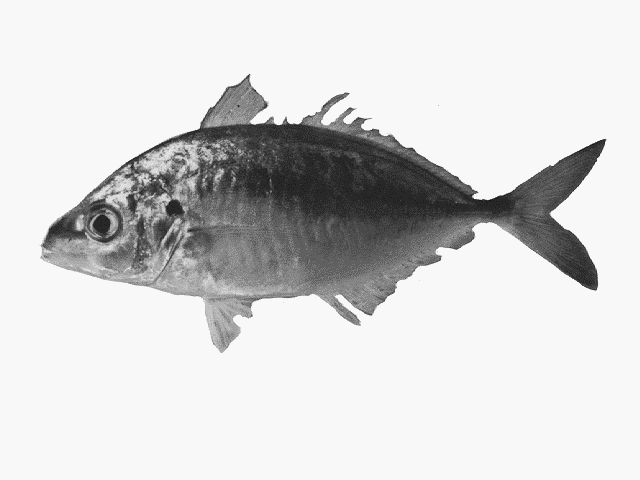| Carangidae (Jacks and pompanos), subfamily: Caranginae |
| 70 cm SL (male/unsexed) |
|
pelagic-neritic; brackish; marine; depth range - 30 m |
| Eastern Indian Ocean: southern Australia, from Western Australia to New South Wales. |
|
Dorsal spines (total): 9-9; Dorsal soft rays (total): 22-26; Anal spines: 3-3; Anal soft rays: 18-22; Vertebrae: 24-24. This species is distinguished by the following characters: posterior margin of upper jaw canted posteroventrally; the lachrymal and expanded part of the maxilla densely covered with scales; a well-defined opercular spot, nearly solid black and approximately the diameter of the pupil; caudal vertebra 14; gill rakers, upper 10-15, lower 24-28, total 35-43; lateral line with 37-48 scales in the curved portion and 24-35 posterior scutes; never developing a yellow mid-lateral body stripe; second dorsal and anal fins transparent or dusky green, no yellow
pigmentation. (Ref. 76781). |
| Adults occur over sand and seagrass (Ref. 26068) in coastal waters including estuaries (Ref. 9563). |
|
Least Concern (LC); Date assessed: 19 July 2017 Ref. (130435)
|
| harmless |
Source and more info: www.fishbase.org. For personal, classroom, and other internal use only. Not for publication.

